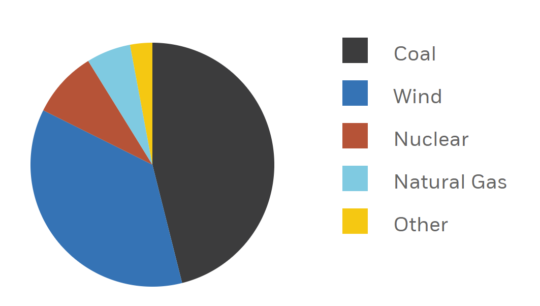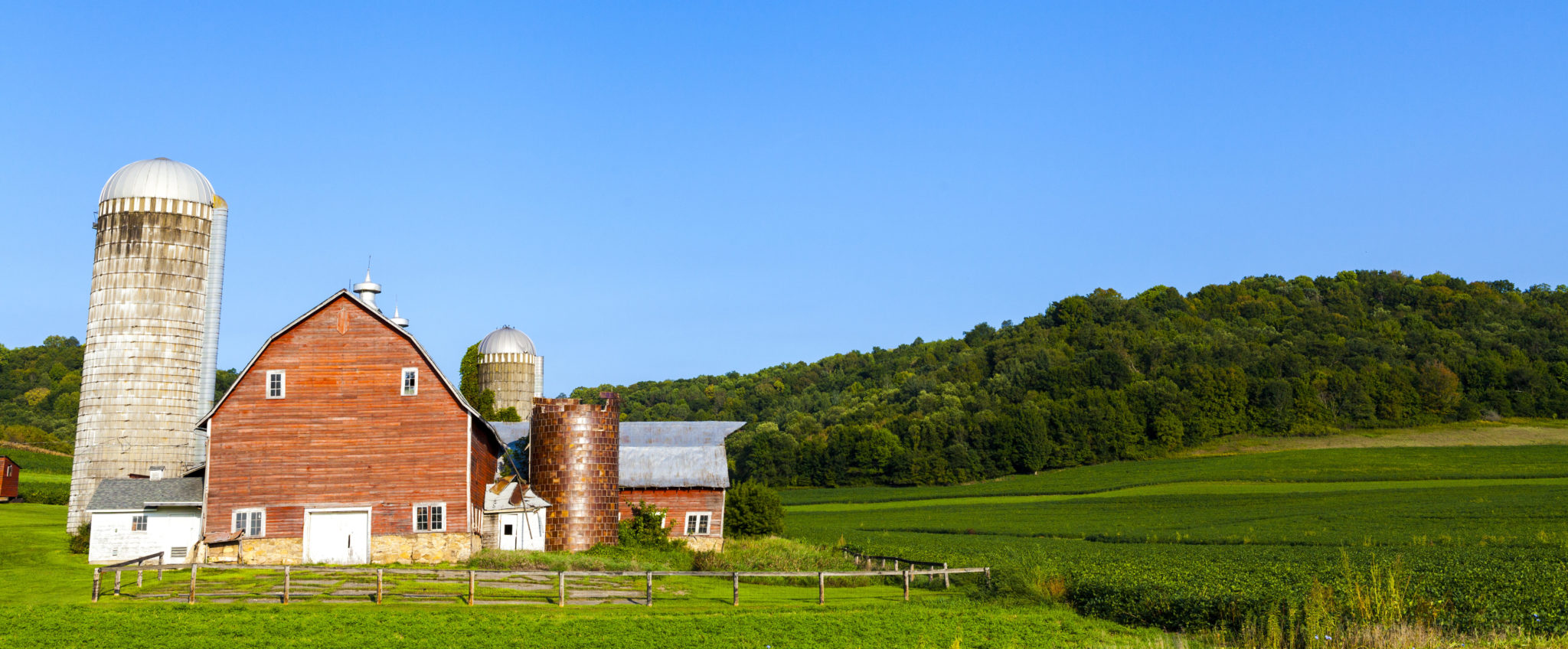Winds of Change Bring Growth to Iowa Towns
A Change to Benefit Generations of Iowans
Iowa is experiencing a clean energy renaissance.
The state was the first to generate more than 30 percent of its electricity from wind, a milestone it reached in 2016. Projects currently under development could push Iowa past 10,000 megawatts of installed capacity by 2020.
One of those projects, Upland Prairie Wind, developed by Apex Clean Energy, will create jobs and generate a significant source of new, long-term revenue for local schools, government services, and landowners. A subsidiary of Alliant Energy, Interstate Power and Light Company, recently purchased the 300-megawatt project.
Sometime in 2018, the company hopes to have the wind farm up and running, generating clean energy at a cost-effective rate for its customers.
Iowa is also the number-two state for lease payments made to landowners who host wind turbines—landowners like Fred Hellinga.
Hellinga has farmed in Osceola County for decades. The 78-year-old Iowan is about to harvest his 53rd crop on another farm just north of the Iowa/Minnesota border. About ten years ago, Hellinga decided to try a new type of farming, too—and he hasn’t looked back since.
Hellinga is harvesting the wind.
“You’re not really putting them in for yourself; you’re putting them in for your kids and grandkids. That’s something for people my age to think about.”
“The only downside is we wish we had a couple more,” says the farmer and retired John Deere salesman, who has two turbines on his land in Osceola County.
Hellinga hopes to one day buy more land with turbines already on it. As a father and grandfather, the turbines’ annual payments don’t just help pay his bills; they’ll eventually help his family as well.
“You’re not really putting them in for yourself; you’re putting them in for your kids and grandkids,” says Hellinga. “That’s something for people my age to think about.”
When Hellinga heard that Upland Prairie was being developed in neighboring Clay and Dickinson counties, he wholeheartedly supported the project and encouraged others to do the same.
“The tax benefits coming into the county being paid by wind companies, that’s a big deal,” says Hellinga. “Who’s going to come in to build a factory out here that’s going to bring that much money in? Or bring these types of jobs into the county?”
Osceola, Clay, and Dickinson are just a few of the many Iowa localities that are reaping the benefits of wind. Across the state, gently spinning turbines dot the farmlands, a twenty-first-century crop that joins fields of corn and beans. Communities across Iowa are embracing an ample natural resource that can mean a boom year instead of a bust for landowners and townships.
Drive a few hours southeast of Osceola County, and you’ll find more evidence of wind’s impact in the slightly larger county of Franklin.
Michael Nolte has served on the Board of Supervisors there for the past 15 years, and he has watched Franklin County flourish with the help of tax revenue from the Whispering Willow wind project, also owned by Alliant.
Iowa generates over 36% of its electricity from wind power, ranking first in the United States for wind energy as a share of total electricity generation. It ranks second in the nation for installed capacity.

Source: American Wind Energy Association
“I see it as a win-win for everybody. The farmers get a payment, it helps counties with tax revenue, and it’s a total green project,” says Nolte. “We’re creating energy with the wind, a resource we already have.”
Nolte says that, unlike other counties struggling to maintain roads and bridges, Franklin has been able to improve its infrastructure, thanks to a $16 million tax-increment financing project only made possible because of tax revenue from the wind farm.
Whispering Willow has proven such a success that Franklin County is welcoming Alliant Energy back for an expansion of the project.
“The working relationship we’ve had with Alliant has been fantastic,” Nolte says. “Everything they said or promised, happened. They did everything right. They said roads would be as good or better when they left as when they arrived, and they were.”
Jacki Nachazel, whose farm borders another property with wind turbines, agrees with Nolte that Whispering Willow has been good for Franklin County—although she wasn’t always so sure that would be the case.
“Since the wind farm went in, we’ve had lots of conversations at the café, which is where a lot of us farmers chat,” says Nachazel.
Nachazel and her husband worried about farming around the turbines, but their concerns dissipated after those café conversations. Now they’re signed up to host wind turbines from the project expansion on their 180-acre farm.
“They haven’t had any problems or issues we’re aware of, so we decided to sign up this time,” Nachazel says. “And quite frankly, we’ll be making more with the wind leases than with the price of corn.”
“The wind farm has brought more jobs and higher-paying, stable careers, which benefit your school and your community,” says Nachazel.
Indeed, the growth of the wind energy sector is producing jobs across Iowa and driving demand for the state’s wind job training programs.
Daniel Lutat, director of sustainable energy resources and technologies at Iowa Lakes Community College in Estherville, has helped build the school’s Wind Energy and Turbine Technology program. The program offers a two-year associate in applied science (AAS) degree, and its graduates have had no problem finding good-paying jobs in the wind industry.
“Our program was the first AAS program in Wind Energy and Turbine Technology in the U.S., and our graduates are making $50,000 to $90,000 per year,” says Lutat. “Placement takes care of itself with the demand in the triple digits, and that looks to be the case for the foreseeable future.”
According to the Bureau of Labor Statistics, wind turbine technician is now the fastest-growing occupation in the United States.

